How Arnold Palmer Changed The Open... (Even If He Wasn't Its Sole Saviour)
It’s widely held that Arnie’s victories in 1961 and 1962 were directly, if not solely responsible for reviving The Open’s fortunes. The reality is a little more complicated…

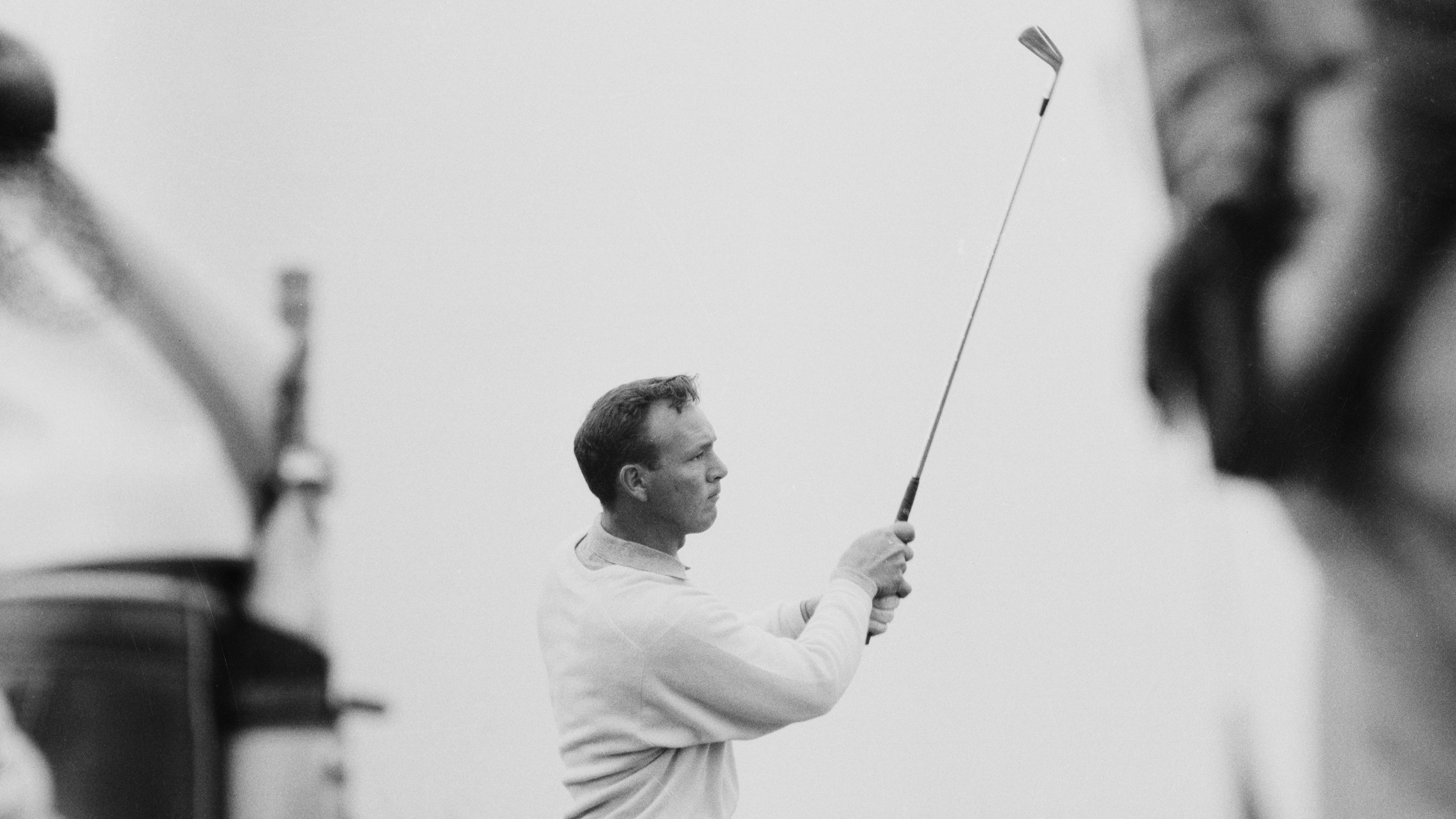
When Arnold Palmer travelled to play in The Open Championship at Royal Birkdale in 1961, it’s fair to say the American public was not overly excited. Despite the fact Arnie had finished second the previous year at St Andrews and was on a scintillating run of form, having won five times on the PGA Tour so far in the season, sports fans didn’t much care what their hero got up to on the other side of the pond.
Writing under the headline, “Junior Tournaments Head Area’s Golf Card” in the Pittsburgh Post-Gazette, from Arnie’s home state of Pennsylvania, on the Sunday before play commenced at Birkdale, Phil Gundelfinger included a tertiary subheading stating, “Arnold Palmer Plays Tomorrow in British Open.”
He described, amidst amateur news, that; “Events involving area players away from the district call for Arnold Palmer’s second try in the British Open at Birkdale, near London.” Not overly enthusiastic, and not overly near London.
Things were quite different in the UK. The excitement around The Open was intense among the golfing and wider sports-loving public. The presence of Palmer in the event only served to heighten the anticipation for Birkdale.
Pre-Qualifying
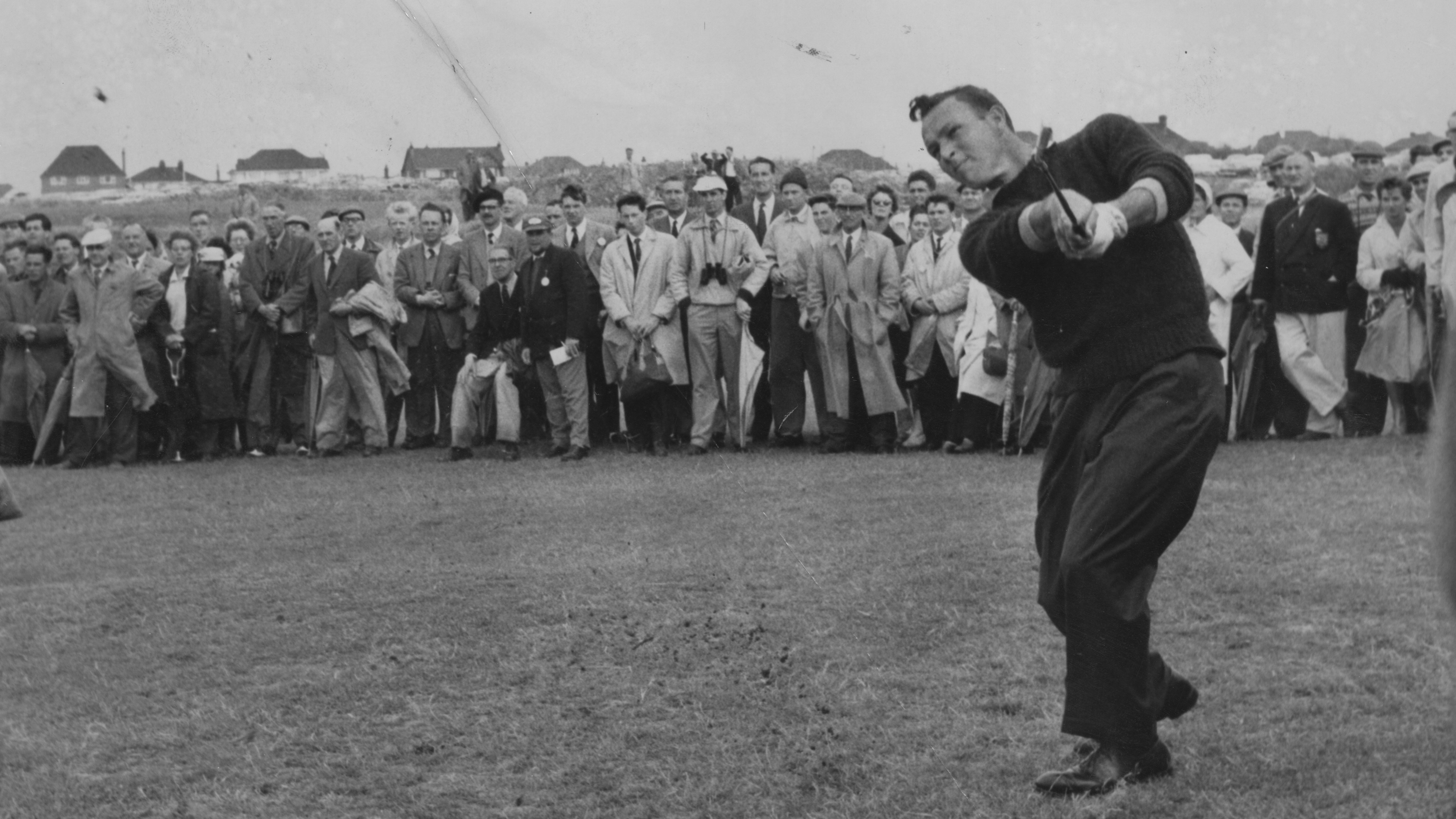
Arnie drew huge crowds at The Open of 1961
At that time all entrants still had to pre-qualify, something that Arnie admitted “irked him” somewhat. In round one of qualifying at Hillside GC, John Ingham, writing in the Evening Standard, described crowds of “thousands” out watching as Palmer “lashed the ball round in 71.”
Hordes of spectators watched Arnie take victory in the championship proper and even though he beat Welsh fan favourite Dai Rees by a shot, there was generally a view that the right man had won.

Arnie with the trophy in front of the Birkdale clubhouse in 1961
The great Henry Longhurst wrote of Palmer’s victory:
Subscribe to the Golf Monthly newsletter to stay up to date with all the latest tour news, equipment news, reviews, head-to-heads and buyer’s guides from our team of experienced experts.
“It’s doubtful that there was a man present at Birkdale who wanted Palmer to lose. It is impossible to overpraise the tact and charm with which this American has conducted himself on his two visits to Britain. He has no fancy airs or graces; he wears no fancy clothes, he makes no fancy speeches. He simply says and does exactly the right thing at the right time, and that is enough.”
Back in the US, the press was lukewarm. The day after his win, the Pittsburgh Press gave Arnie’s victory a third of a page. H.W Thornberry was given similar column inches in the San Francisco Examiner. The Chicago Tribune only managed a quarter page. Arnie wasn’t going to receive a ticker-tape parade on his return to the US.
A Repeat performance
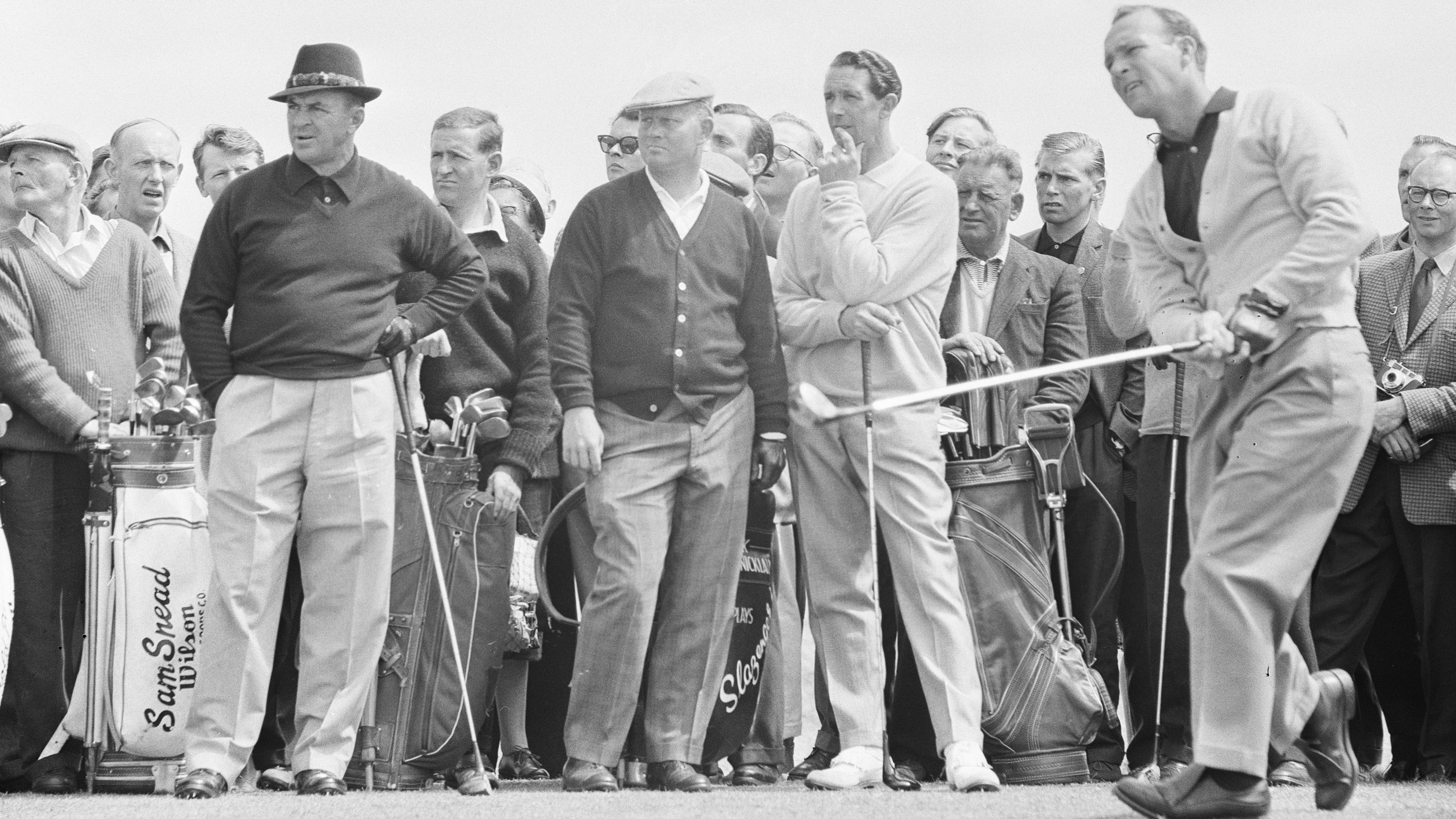
An illustrious group - Sam Snead, Jack Nicklaus, Bob Charles and Arnie playing at Royal Troon
But Arnie had won over a new British branch of his “army,” and they would be out in even greater force when he returned to defend his Open title at Royal Troon in 1962.
Producing one of the very great performances of his career, Arnie put on an Ayrshire masterclass, producing a record score to win by six from Kel Nagle, with third place trailing a further seven behind.
Palmer was carried on a wave of monumental support. In the Daily Telegraph Leonard Crawley stated: “If ever there was a great winner it was Palmer.” He described the mass of people there to watch Palmer’s performance – “The final shots were played in the middle of the most fantastic crowd scenes as 30,000 people pressed forward in a galloping mass. One man was pushed through a window, a woman fainted and 10 people were pushed into a bunker.”
Arnie was the biggest star in golf and the British fans adored him. Just in the way they had with Bobby Jones at St Andrews or Ben Hogan at Carnoustie, people would talk of being at Troon in 1962 for decades to come. They loved the best golfers and they loved The Open.
The Americans loved the best golfers too but when it came to The Open they would take some convincing, as would the other US professionals who would have to be competing to pique the American public’s interest.
Palmer’s very participation in the event was, undoubtedly, a catalyst, but really, it was a series of factors behind the scenes that combined to change US professionals’ and their golfing fans’ perception of the grand old championship.
Wide World Of Sports
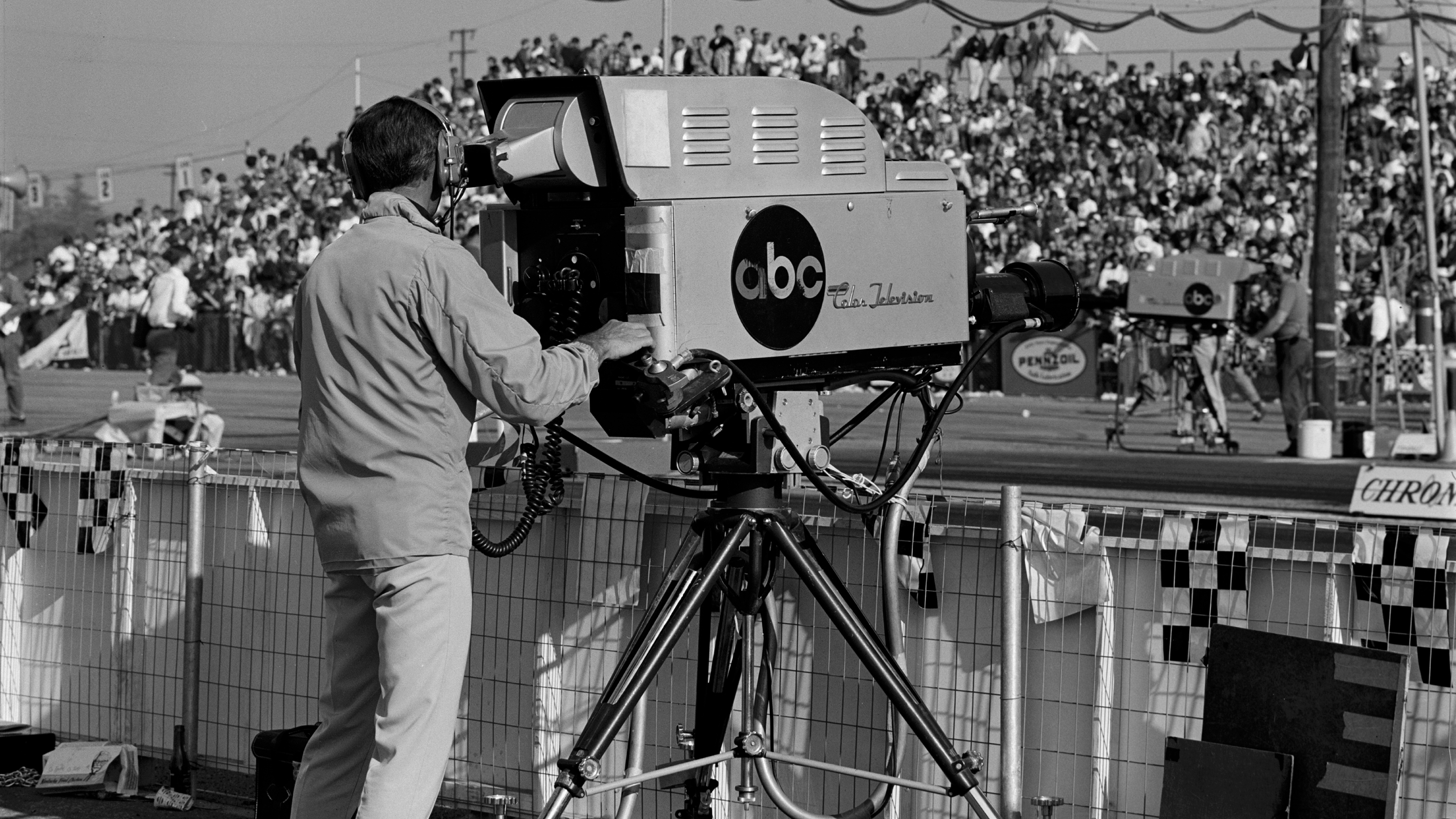
An ABC cameraman for Wide World of Sports
Firstly, American sports fans had the chance to watch Palmer competing in The Open thanks to the efforts of sports executive Roone Arledge at ABC.
In 1961 ABC began making a programme called Wide World of Sports. It was an anthology series aiming to showcase sports from across the globe, not generally seen on US television. It was relatively low cost compared to live broadcasts, as sporting events could be videotaped and shown at a later date.
Initially aired on a Saturday afternoon, the programme debuted on 29 April 1961. Through the coming years, the weekly show brought new sporting spectacles into the living rooms of American viewers, including Wimbledon, the Grand National, the Monaco Grand Prix and… The Open Championship.
Roone Arledge secured the rights to show an hour of footage from The Open on Wide World of Sports in 1961 and so Arnie’s legions of fans were able to watch grainy coverage of his triumph on the links.
ABC paid the Royal & Ancient £11,000 for that hour of footage and receipt of the cheque caused motors to whir and bells to ring in St Andrews.
The Royal & Ancient recognised the importance of attracting the top US players to The Open. The organisation saw that the American players wouldn’t be drawn across the Atlantic simply because of some assumed deference to the old championship and the home of golf. Nor would they travel just because Arnold had. These guys were professionals. What would attract them was money and prestige.
A changing approach
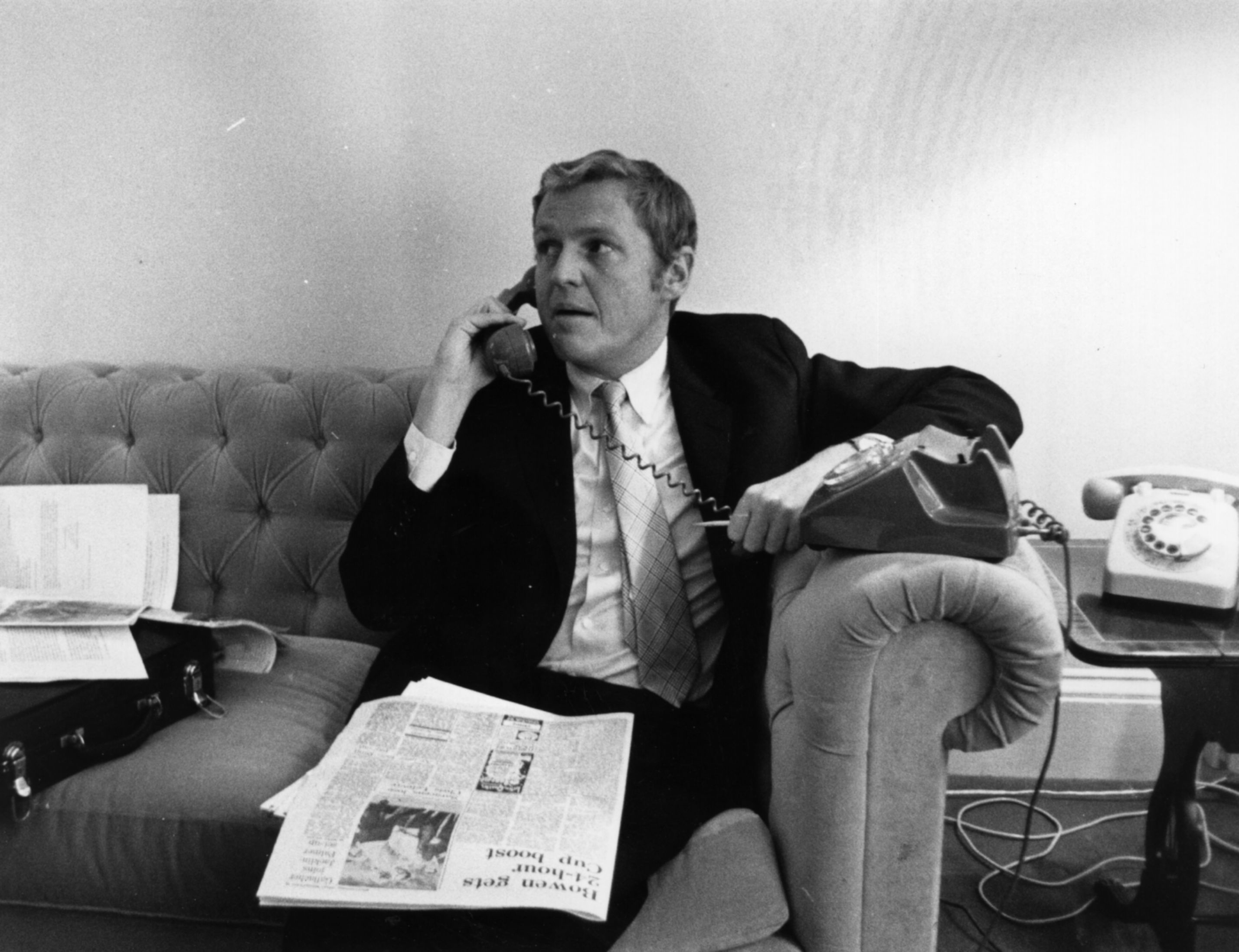
Mark McCormack
Later in the 1960s, the Royal & Ancient secretary Keith Mackenzie teamed up with Mark McCormack (Arnold Palmer’s manager since 1960) to think of ways to generate money from The Open, and so be able to offer competitors a larger prize fund. More TV deals were done, hospitality suites appeared at the championship, and these were sponsored. Mackenzie made regular trips to the US to convince the young American stars that the Open was worth competing in. There was increasingly more money on the table, and with TV and promotion, they would be seen competing by their fans back home.
There was another key issue putting off the American players in the early 60s, something Palmer was happy to voice his opinions on (as expressed before) – the archaic qualifying requirements for all participants. There were no exemptions for top players, everyone had to go through the qualifying. Americans who were not attracted by the “meagre” prize money, were certainly not attracted at the prospect of potentially being slipped up in the qualifier and not even making the main event. That truly would be a wasted week.
This was recognised too and, after 1962, the Royal & Ancient changed the criteria for qualifying and offered exemptions – They did this for the first time in 1963 when various exemption categories (including those that would be of benefit to US players) were introduced.
In 1960 when Arnie first played in the championship at St Andrews, he was one of just four Americans in the field. They were competing for a prize fund of £7,000 ($19,600) with £1,250 ($3,500) going to the champion. In comparison, the US Open of that year carried a purse of $60,720 with $14,400 going to the winner. In 1961, Arnie won £1,400 at Birkdale, barely enough to cover his costs. Gary Player had picked up $20,000 for winning The Masters earlier in the year.
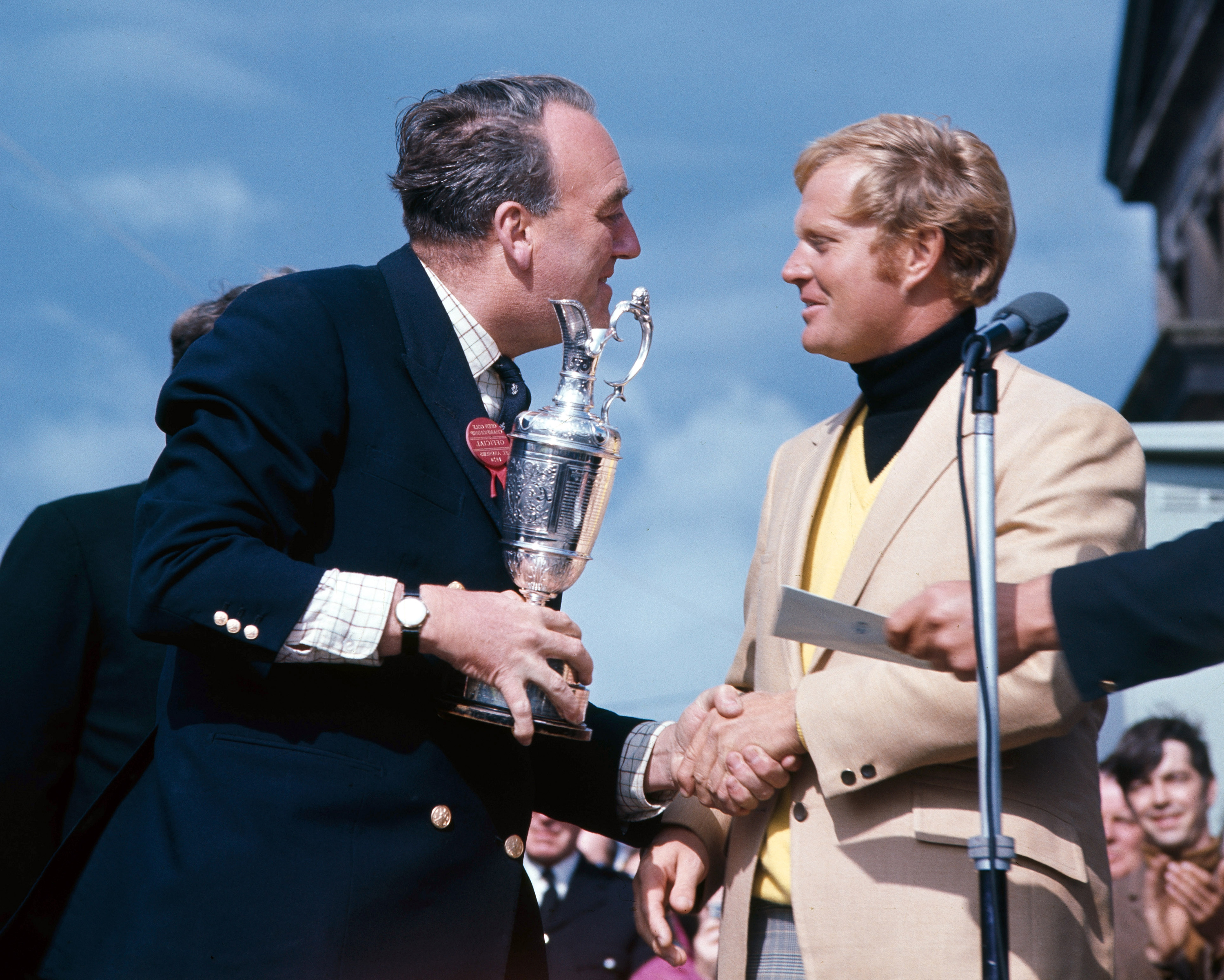
Jack Nicklaus accepts the Claret Jug from Willie Whitelaw in 1970
By 1970 when The Open was at St Andrews, the prize fund was up to £40,000 ($96,000) with £5,250 ($12,600) to the victor, Jack Nicklaus. That bump in funding, combined with the new exemptions and the public relations work conducted by the Royal & Ancient, plus the goodwill of US ambassadors like Palmer and then Jack Nicklaus to encourage top American golfers to make the journey across the Atlantic, meant that in 1970 there were no fewer than 24 Americans in the final field, and the top three finishers were from the States.
In the space of a decade, US participation had increased sixfold, prize money had risen by nearly four times, and The Open was firmly established once more as a must-win championship for the American greats of the game. Arnie’s forays across the Atlantic had provided a spark to set the wheels of commerce in motion and cause those in charge behind the scenes in St Andrews to make some changes and move with the times.
The 60s was a decade of fast-paced social change. International travel became quicker and more viable, international media brought news more rapidly, and via television, into homes that were thousands of miles from where that news occurred. This meant American golf fans could understand the challenges of links golf and get a feel for what The Open was about.
Cool Britannia
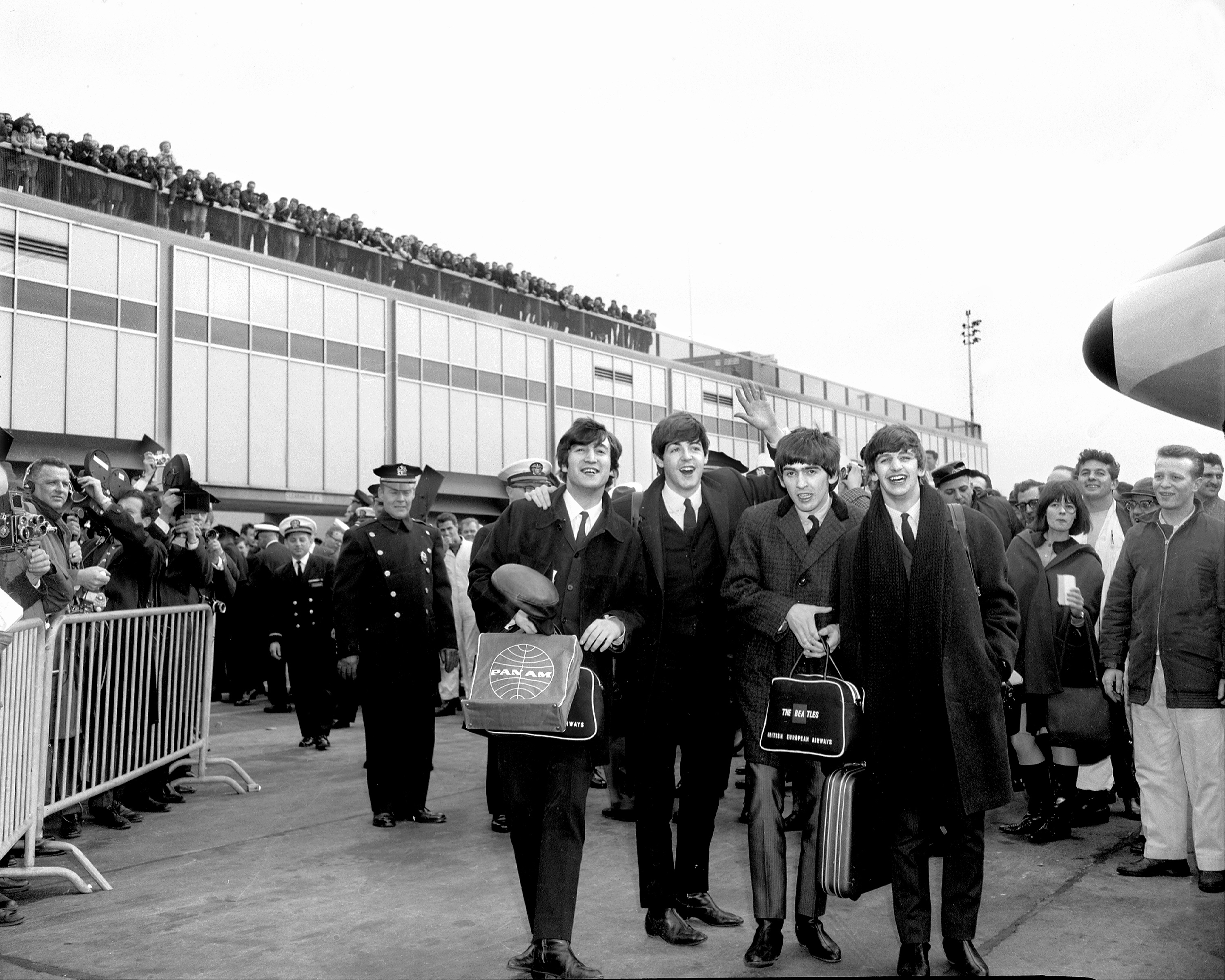
The Beatles arrive at Idlewild Airport to be greeted by thousands of fans
In addition, Britain became trendy – America welcomed The Beatles and the mini skirt.
“When the Beatles arrived in America, it was like seeing a new colour for the first time,” a fan was quoted as saying.
The UK wasn’t just some stuffy old land of blazers and tiffin – The Brits were cool… Tony Jacklin looked cool.
Owing to forward thinking administrators and managers taking advantage of new technologies and riding a wave of change, The Open regained its status and popularity in the US, and grew globally, during the swinging 60s. Arnie was at the vanguard of that turnaround but it’s too romantic and idealistic an interpretation of history to say he was the sole reason for it. As always, the real reason for the revival was money – Money and exposure from TV meaning more money for the Royal & Ancient, which allowed for more money for players and more money for their agents. Some things never change.
Tale of the Tape

A typical Arnie finish
1961 Open Royal Birkdale – Top 5 Finishers
1 Arnold Palmer (USA) 284 £1,400
2 Dai Rees (Wal) 285 £1,000
T3 Neil Coles (Eng) 288 £710
T3 Christ O’Connor Snr (Ire) 288 £710
T5 Eric Brown (Sco) 289 £400
T5 Kel Nagle (Aus) 289 £400
1962 Open Royal Troon – Top 5 Finishers
1 Arnold Palmer (USA) 276 £1,400
2 Kel Nagle (Aus) 282 £1,000
T3 Brian Huggett (Wal) 289 £710
T3 Phil Rodgers (USA) 289 £710
5 Bob Charles (NZ) 290 £475
1970 Open St Andrews – Top 5 Finishers
1 Jack Nicklaus (USA) 283 £5,250
2 Doug Sanders (USA) 283 £3,750
T3 Lee Trevnio (USA) 285 £2,750
T3 Harold Henning (RSA) 285 £2,750
5 Tony Jacklin (Eng) 286 £2,200
Arnold Palmer – By The Numbers
7 – Major Championship titles
38 – Top-10 finishes in Majors
142 – Major starts
95 – Professional victories in total
4 – Times PGA Tour leading money winner
1 – US Amateur title (1954)
33 – Years between his first and last professional victories 1955-1988
2016 – The year he died, aged 87
14,000 – At the time of his death, it’s estimated Arnie was the owner of some 14,000 golf clubs, including a famous wall of putters housing 2,000 plus.

Fergus is Golf Monthly's resident expert on the history of the game and has written extensively on that subject. He has also worked with Golf Monthly to produce a podcast series. Called 18 Majors: The Golf History Show it offers new and in-depth perspectives on some of the most important moments in golf's long history. You can find all the details about it here.
He is a golf obsessive and 1-handicapper. Growing up in the North East of Scotland, golf runs through his veins and his passion for the sport was bolstered during his time at St Andrews university studying history. He went on to earn a post graduate diploma from the London School of Journalism. Fergus has worked for Golf Monthly since 2004 and has written two books on the game; "Great Golf Debates" together with Jezz Ellwood of Golf Monthly and the history section of "The Ultimate Golf Book" together with Neil Tappin , also of Golf Monthly.
Fergus once shanked a ball from just over Granny Clark's Wynd on the 18th of the Old Course that struck the St Andrews Golf Club and rebounded into the Valley of Sin, from where he saved par. Who says there's no golfing god?